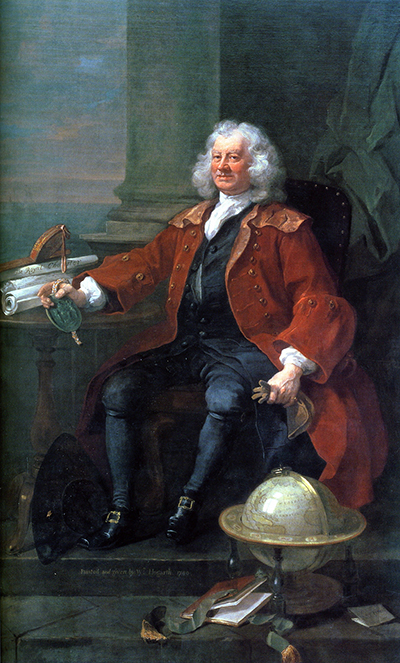William Hogarth was born in the year 1697 and died in the year 1764 in Bartholomew Close, in London. He was a son to a poor teacher of Latin who spent most of his time in the Fleet Prison due to the debt he owed.
As a member of the Freemason cult, Hogarth got married to Jane Thornhill in the year 1729, who was Sir James Thornhill's daughter. The couples were not blessed with any child and fostered fondling kids while taking much interest in the issues of Captain Coram's Foundling Hospital. William Hogarth did the painting in the year 1740 referred to as the Portrait of Captain Thomas Coram, a philanthropist of the time. The picture, which can be regarded as William Hogarth's greatest success in direct depiction, wasn't developed or painted as a commission and was instead given to Coram's Founding Hospital as a donation.
The picture is split up into two parts: The left section which depicts Coram's sea ventures, which was the primary source of his riches. And the right part which indicates a curtain dragged above a mother-figure having a baby. The picture is stored in the collections of Foundling Museum located in London, in the United Kingdom.
The painting is made up of a physically bulk man sitting at the centre of the scene. His environment is made up of different objects that define what matters to him. For instance, the object that depicts the globe shows that he values his adventures across the world. The painting depicts Captain Coram’s state of composure and carefree attitude. Based on the alignment of his attire, he seems not worried about anything. For instance, his waistcoat is partly buttoned while his outer coat is completely unbuttoned. He has buckled shoes on his feet, and notably, his feet seem to be hanging as they have not touched the ground on which the seat lies. The legs are apart. His posture depicts a proclaiming and calm nature that is associated with a fearless person. His hair is abundant and grey.
Besides, he has a bluff complexion that depicts normal dependability. He appears to be smiling and as his eyes assume a fixed look. Behind him is a building pillar. Beside him is a table that has rolls of scrolls with pieces of information. There is a book that is half opened in the next step from his feet. The scene of the painting depicts a cool and carefree environment which fits in a relaxed mood based on the expression and the posture of the individual featured in the portrait. The medium of the painting is oil on canvas.




